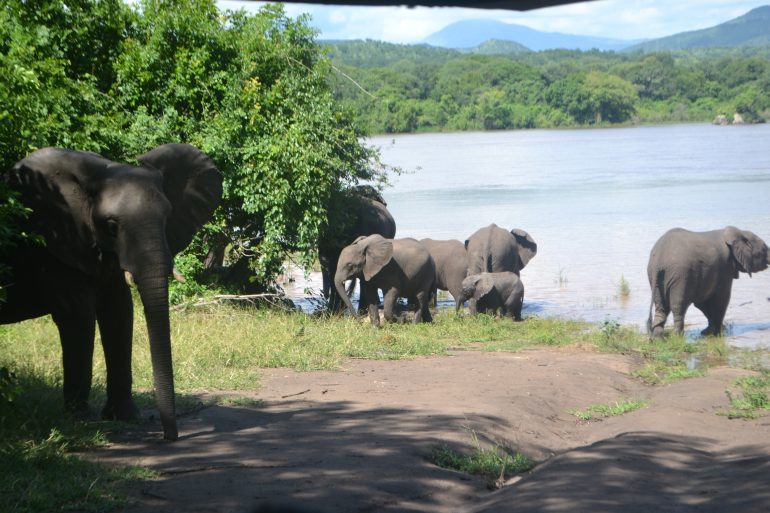
By Bonface Orucho, bird story agency
Wildlife, particularly roaming species, exhibit remarkable mobility, covering vast distances in pursuit of essential resources such as water, grazing land, mates or favourable conditions like ideal calving sites.
Estimates by the Tsavo Trust, a Kenyan conservation nonprofit, reveal that elephants within the Tsavo conservation area undertake daily journeys of between 50 and 150 kilometres, following distinct migration routes and pathways.
In Kenya, as in many other African countries, national parks are unfenced, allowing animals to migrate in and out of parks and follow seasonal foods. Population pressure and climate change, among other factors, have, however, disrupted these migration routes and vital habitats, posing a threat to both wildlife and communities.
Data from Save the Elephant shows that more than 60% of Africa’s elephants migrate out of protected areas
Efforts to conserve wildlife corridors to allow for protected movement in and out of reserves, or from reserve to reserve, are now on the rise across Africa, driven by rising investor enthusiasm and increased community engagement.
According to Evan Mkala, a program manager for the International Fund for Animal Welfare, IFAW, a model introduced at in the Amboseli-Tsvao-Kilimanjaro Landscape, which links three key wildlife protection zones, this model is showing significant success.
“The unique aspect in our case is the fact that it is the community driving these initiatives,” Mkala explained in a telephone interview.
One noteworthy community-led conservation effort is underway in Mashenani, in Kenya’s Kajiado County, where stakeholders have collaborated to establish the Illaingarunyoni Conservancy.
The land making up the new Illaingarunyoni Conservancy is an important space nestled within the last remaining natural corridor that allows wildlife to move between Amboseli and the Greater Mara landscapes.
This initiative aims to safeguard a crucial wildlife corridor, facilitating the movement of over 2,200 elephants and various other roaming species between Amboseli and the Greater Mara landscapes.
In March, the project received a major boost when more than 1,000 landowners from the Maasai community agreed to commit their parcels of land (29000 acres) to conservation by leasing them to the International Fund for Animal Welfare (IFAW), the organisation implementing the initiative.
Besides the fact that the community will have access to grazing land during the dry season, there are further future benefits for the community, according to George Lupembe, area chief of Loolaki within the Illaingarunyoni Conservancy.
“Our children will be employed in the conservancy, and the community will also have a consistent flow of income from revenue-generating programs implemented in the conservancy,” he explained.
Patrick Sayialel, the deputy director in charge of the ranger unit at the Olgulului Community Wildlife Rangers who has experience with similar projects in the same ecosystem, explained the significance of the initiative.
“In 2019, we did suffer a very severe drought and that was because there was no land use policy or management for that case. But with grazing committees and now deliberate efforts to establish a conservancy, things are changing for the better,” he explained.
The Amboseli ecosystem hosts some of the region’s largest protected areas, including the Tsavo, Kilimanjaro, Amboseli and Mara Landscapes.
According to Mkala, community conservancies have been successfully established along crucial wildlife corridors in the area.
“In Kitenden Conservancy, after 12 years, stakeholders have managed to convert it from the regular land, which was bare, to a fully grown community-owned wildlife conservancy,” he said.
“The conservancy has an investor who is going to stay there with them for the next thirty years, probably 60. That means that area is secure for posterity,” he added.
Data from the Kenya Wildlife Conservancies Association shows that in the famed Maasai Mara, 15 conservancies protect over 450,000 acres of critical habitat for the great Serengeti-Mara wildebeest migration.
“This has seen the lion population double over the last decade and 3,000 households earn more than $4 million annually from tourism,” the association highlights.
The proposed Illaingarunyoni Conservancy project is part of the broader Room to Roam Initiative being implemented in Eastern and Southern Africa, targeting to create free movement and passage for African Savannah Elephants in these regions.
Efforts to secure wildlife dispersal areas and gateways are being implemented in other regions across the continent through initiatives spearheaded by non-profits and governments.
In Tanzania, more than 50 corridors linking key protected areas have been identified. However, perhaps the largest initiative in this space is the transfrontier conservation area (TFCA), which targets conserving key wildlife passages by connecting multiple game parks and reserves in the southern African region.
The Western Wildlife Corridor in West Africa is a vital migration path for wildlife movements between Burkina Faso and Ghana, while in the south of the continent, 16 countries have an area of more than a million square kilometres that they want to link up.
Mkala highlights that the big vision here is to use conservancies along wildlife “highways” to interconnect all habitats and protected areas across the continent.
“If we can connect Amboseli all the way to Mara, then it is possible to connect to Tanzania and before you know it, all the animals can be able to interconnect across the continent,” he explained.
“If we allow these roaming wildlife species to move freely, we can avoid inbreeding and wildlife casualties, especially during droughts, because animals will effectively move to other habitats where they will access water and pasture,” he added.
Mkala, however, stresses the need to review existing laws and policies to accommodate land use for conservancies outside protected areas, an element that is missing in present laws.
bird story agency










